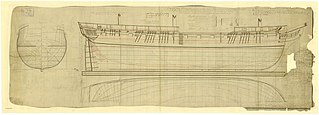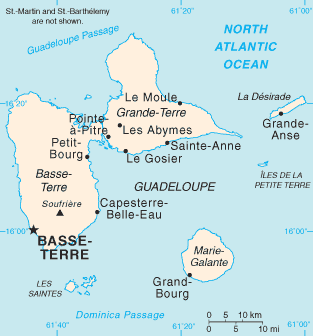
HMS Java was a British Royal Navy 38-gun fifth-rate frigate. She was originally laid down in 1805 as Renommée, described as a 40-gun Pallas-class French Navy frigate, but the vessel actually carried 46 guns. The British captured her in 1811 in a noteworthy action during the Battle of Tamatave, but she is most famous for her defeat on 29 December 1812 in a three-hour single-ship action against USS Constitution. Java had a complement of about 277, but during her engagement with Constitution she allegedly had 426 aboard, in comparison with her opponent's 475.

The Dardanelles operation was a failed assault by the British Royal Navy against the coastal fortifications of Constantinople. The operation was part of the Anglo-Turkish War.

HMS Speedy was a 14-gun Speedy-class brig of the British Royal Navy. Built during the last years of the American War of Independence, she served with distinction during the French Revolutionary Wars.

HMS Galatea was an Apollo-class fifth rate of the Royal Navy. The frigate was built at Deptford Dockyard, London, England and launched on 31 August 1810. In 1811 she participated in the Battle of Tamatave, which battle confirmed British dominance of the seas east of the Cape of Good Hope for the rest of the Napoleonic Wars. She was hulked in 1836 and broken up in 1849.
Captain Sir Thomas Staines was an officer in the Royal Navy.

The Battle of Tamatave was fought off Tamatave in Madagascar between British and French frigate squadrons during the Napoleonic Wars. The action was the final engagement of the Mauritius campaign of 1809–1811, and it saw the destruction of the last French attempt to reinforce their garrison on Mauritius. Although the news had not reached Europe by February 1811 when the reinforcement squadron left Brest, Mauritius had been captured in December 1810 by a British invasion fleet, the French defences hampered by the lack of the supplies and troops carried aboard the frigate squadron under the command of Commodore François Roquebert in Renommée. Roquebert's heavily laden ships reached Mauritius on 6 May and discovered that the island was in British hands the following day, narrowly escaping a trap laid by a squadron of British frigates ordered to hunt and destroy them.

Clorinde was a 40-gun Pallas-class frigate of the French Navy, designed by Sané. The British Royal Navy captured her in 1814 and renamed her HMS Aurora. After 19 years as a coal hulk she was broken up in 1851.

HMS Astraea was a Royal Navy 36-gun fifth rate Apollo-class frigate, launched- in 1810 at Northam. She participated in the Battle of Tamatave and in an inconclusive single-ship action with the French frigate Etoile. Astrea was broken up in 1851.

The action of 22 January 1809 was a minor naval engagement fought off the Caribbean island of Guadeloupe during the Napoleonic Wars. The action was fought as part of the blockade of Guadeloupe and neighbouring Martinique by a large British Royal Navy squadron, which was seeking to cut the islands off from contact and supplies from France by preventing the passage of shipping from Europe to the islands. The British blockade was part of their preparation for planned invasions during the next year.

The action of 10 February 1809 was a minor naval engagement of the Napoleonic Wars, in which a British Royal Navy squadron chased and captured the French frigate Junon in the Caribbean Sea. Junon was on a mission to carry trade goods from the Îles des Saintes near Guadeloupe back to France and was part of a succession of French warships sent during 1808 and the early months of 1809 in an effort to break the British blockade of the French Caribbean, which was destroying the economies and morale of the islands. Having landed supplies, Junon's return cargo was intended to improve the economic situation on Guadeloupe with much needed oceanic trade.

HMS Tartar was a 32-gun fifth-rate Narcissus-class frigate of the Royal Navy, built at Frindsbury and launched in 1801. She captured privateers on the Jamaica station and fought in the Gunboat War and elsewhere in the Baltic Sea before being lost to grounding off Estonia in 1811.
HMS Amaranthe was an 18-gun Royal Navy Cruizer-class brig-sloop built by John Dudman at Deptford Wharf and launched in 1804. She served in the Caribbean, taking part in an action and two campaigns that gained those members of her crew that survived until 1847 the NGSM. She was sold in 1815.

Roquebert's expedition to the Caribbean was an unsuccessful operation by a French naval squadron to transport supplies to Guadeloupe in December 1809 at the height of the Napoleonic Wars. Over the previous year, British Royal Navy squadrons had isolated and defeated the French Caribbean colonies one by one, until by the autumn Guadeloupe was the only colony remaining in French hands. Cut off from the rest of the world by British blockade squadrons that intercepted all ships coming to or from the island, Guadeloupe was in a desperate situation, facing economic collapse, food shortages and social upheaval, as well as the impending threat of British invasion. In an effort to reinforce and resupply the colony, the French government sent four vessels to the West Indies in November 1809 under Commodore François Roquebert. Two of the ships were 20-gun flûtes carrying supplies and troops. The two others were 40-gun frigates, ordered to protect the storeships on their journey from the British forces operating off both the French and Guadeloupe coasts.

HMS Superieure was the French privateer Supérieure, which was built in 1801 in Baltimore, Maryland, and which the British captured in 1803 in the West Indies, and took into the Royal Navy. She spent most of her career on the Jamaica and Leeward Islands stations, where she captured numerous privateers. She participated in several notable single-ship actions, including one in which she harassed a frigate, and two campaigns that would, in 1847, earn her surviving crew members the Naval General Service Medal (NGSM). She was laid-up in Britain in 1810 and sold in 1814.
Jean-François Lemaresquier was a French naval officer.
Vice-Admiral Sir Charles Dashwood KCB was a distinguished British officer, who served in the Royal Navy during the American Revolutionary War, the French Revolutionary Wars, the Napoleonic Wars and the War of 1812. He had a long and prestigious naval career, gaining his own command by the last stages of the French Revolutionary Wars. He took part in a number of famous naval battles during his career, such as the Battle of the Saintes, the Glorious First of June and the Battle of Tory Island, where he received the sword of the French commodore, Jean Bompart. His record also includes extensive operations in the West Indies and the Baltic Sea, followed by the expedition to New Orleans in 1815.

HMSEmerald was a 36-gun Amazon-class fifth rate frigate that Sir William Rule designed in 1794 for the Royal Navy. The Admiralty ordered her construction towards the end of May 1794 and work began the following month at Northfleet dockyard. She was completed on 12 October 1795 and joined Admiral John Jervis's fleet in the Mediterranean.
The French brig Observateur, which was launched in 1800 for the French Navy, was a Vigilant-class 16-gun brig, one of six built to a design by Pierre-Alexandre-Laurent Forfait. The Royal Navy captured her in 1806 and took her into service as HMS Observateur. She participated in two actions, one for the French Navy and one for the Royal Navy, and one campaign before she was laid up in 1810. The Navy did not succeed in selling her until 1814.
The Loire-class flûte was a French Navy class of two 20-gun flûtes that Louis, Antoine, and Marhurin Crucy, Basse Indre, built to a design by François-Louis Etesse, and under a contract dated 5 November 1802.












